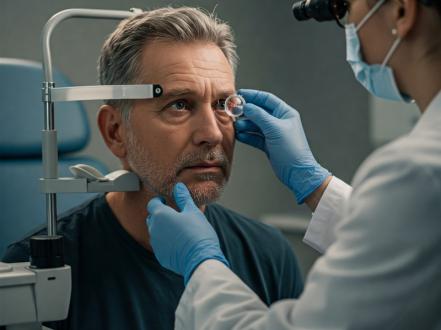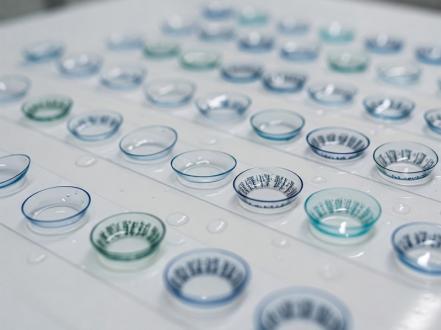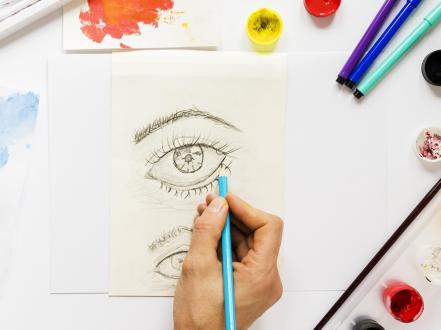Pivotal details about diabetic retinopathy and how to care for your vision
Our eyes are the most vulnerable sense organ, and since up to 80 percent of information and impressions a human perceives by vision, it is crucial to care for your eyesight, protect and strengthen it, have the regular eye examination for timely detection of some triggers for its deterioration, and learn the efficient techniques and tips on how to improve eyesight. And while it is possible to limit total screen time to eliminate the exposure to harmful blue light, start living a healthier life, and do specially designed exercises to enhance eye muscles, focus better on nearby objects, and stimulate the vision center in the brain, some underlying conditions that provoke eyesight impairment are more difficult to manage and require comprehensive medical assistance. One of such diseases is diabetic retinopathy. So let's explore this insidious disorder in more detail to be able to spot the enemy before it's too late, treat it properly, and restore eye wellness.
Warning symptoms of diabetic retinopathy
Diabetic retinopathy is a retina disease that, if handled incompetently, can lead to complete blindness. Patients with diabetes mellitus should pay special attention to the eyes health since they are at the biggest risks. At the first phase of the disease, the symptoms are usually silent, and you may not notice them. Thus, developing and progressing painlessly and with few symptoms, this disorder is one of the most hazardous and needs to be diagnosed accurately and cured immediately to prevent complications.
With the disorder, you may experience distorted vision when objects look wavy or bent incorrectly or difficulty with close-up reading that is similar to symptoms of presbyopia. Having degradation of near visual acuity, you need a consultation of a health care specialist who can identify the main sources of your eyesight worsening. When it comes to the latest stages, the severe signs and unpleasant sensations that will probably appear are:
- Central vision issues since with the above-mentioned disease, the fluid is able to build up in the vital for vision retina region.
- Impaired color perception: with diabetes, you may suffer due to the inability to distinguish certain shades of color.
- Blurred vision, floating shapes, and dark spots in the eyes: tissue swelling may lead to cloudy vision and the loss of sight sharpness.
- Aching and redness: these are the alarming signals that you should examine your eyes.
Since disturbing effects will not grow and intensify until the disorder advances, to control your well-being and be sure you are not in the huge-risk category, Vision Care specialists recommend checking up your vision regularly, even if you don't feel any discomfort, as such a wise approach to your health is the guarantee of preventing consequences that may be destructive for your eyesight.
Diabetic retinopathy stages and their severity
Depending on the degree of typical signs manifestation, such as microaneurysms, microbleeds, neovascularization, etc., the illness is classified into four stages. The latest phase, known as proliferative diabetic retinopathy, is the most vision-threatening, which is characterized by blockage of blood vessels, so new more fragile vessels start growing in the vitreous humor. These new vessels are prone to bleeding, aggressively affecting the sight. With the last stage, you probably will require prompt surgical procedures to reduce the intensity of the disease.
Diabetic retinopathy causes and risk factors
Suffering from such a condition, the retina that is responsible for creating an image in our brain is progressively destroyed. If glucose is elevated, the central retinal artery and the short posterior ciliary arteries are damaged. The vessels become weakened and with the progression of the disease, more and more blood vessels are harmed. Total vision loss is the biggest concern that every patient must worry about.
The solution is to deal with an excess of glucose in the bloodstream since hyperglycemia, that is an increase in blood sugar levels, adversely affects cells and is considered one of the retinopathy causes.
If the most common eye disease, which results in impairment or loss of vision, is not detected in time, complications will inevitably develop, including retinal detachment, macular degeneration, vitreous hemorrhages, or neovascular glaucoma. The opaqueness of the eye lens, known as cataract, is another health outcome that may await people with diabetes.
Suffering due to diabetes, you must remember that timely treatment is essential to avert complications.
Also, the main risk factors affecting the frequency and rate of progression of diabetic retinopathy include the duration of diabetes mellitus, arterial hypertension, chronic renal failure, dyslipidemia, obesity. The condition can be also promoted by pregnancy, hereditary predisposition, and smoking.
Remember that several risk factors can be eliminated to enhance your treatment.
How to develop a diabetic retinopathy treatment plan
The therapy’s mission is to stop or slow down the loss of vision that irreversibly occurs when the retina is damaged. There are two possible strategies:
Drug treatment
To address the illness, at the initial stage of the development of the disease, the patient may be prescribed angioprotectors. These are medications which act to alleviate conditions or prevent diseases which affect the eye blood vessels, strengthening them. In addition, the therapy includes an optimal combination of vitamins B, P, E, A, lutein, zeaxanthin, methylcobalamin (B12), as well as the intake of ascorbic acid, vitamin D, and antioxidants. The injection of steroids can prevent inflammation and stop the growth of vessels. Consult an eye doctor to find out more drug solutions.
Regardless of which therapy plan will be developed, during treatment, the patient needs to regularly measure blood sugar levels in order to prevent prolonged hyperglycemia.
Surgical procedures
The choice of curing method largely depends on the illness phase. Currently, the most effective and reliable way for preventing the progression of diabetic retinopathy is retinal laser coagulation. In the proliferative stage, vitrectomy, the surgical operation can be the only medical solution.
Is it possible to prevent diabetic retinopathy?
Compliance with the eye care requirements for diabetics will slow down the occurrence of complications, however, won’t repair your eyesight fully. To eliminate key threats for further vision deterioration, for a patient who struggles with elevated levels of glucose in the blood and urine, it is imperative to:
- follow a diet: your diet and the level of nutrients, vitamins, antioxidants you consume daily play a critical role in maintaining eye well-being, so striving to combat eye issues, you better focus on adopting a healthier manner of living and adding foods that help to lower cholesterol and control sight worsening;
- take your medications on time: medication adherence is paramount for controlling diabetes and healing your eye condition;
- monitor your blood pressure: it is one of the triggers for retina problems, thus, there are also strategies for regulating the pressure and keep it down;
- avoid being overweight: obesity is the predominant risk factor, so you have to properly manage the condition of being grossly fat;
- add physical activity to your schedule: a regular workout regime is associated with decreased severity of symptoms of diabetic retinopathy; moreover, disciplined exercising can excellently assist if you strive to maintain optimal weight. The care tactic for diabetes cannot exist without adequate training and activity;
- do not smoke and avoid alcohol consumption: breaking old and stubborn habits, such as smoking, decreases chances of vision loss.
Strict adherence to the recommendations will not eliminate the eye changes that have arisen, but will mitigate the aggravation of the process

















